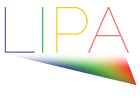LIPA welcomes two new members, Dolby and Foxconn, at its Annual General Meeting (AGM) on December 7, 2021.
Dolby, Dolby Laboratories, Inc., engages in the provision of audio and imaging technologies. It transforms entertainment and communications for content playback in movies, television, music, and gaming. Its products include Cinema Imaging, Cinema Audio, Dolby Conference Phone, Dolby Voice Room, and Other Products. The company was founded by Ray Milton Dolby in 1965 and is headquartered in San Francisco, CA.
Dolby Cinema is an emerging premium large format (PLF) standard that combines Dolby Vision and Dolby Atmos for an experience that offers the best in sound and imaging. Dolby Cinema uses dual laser projectors that integrates Dolby Vision High Dynamic Range (HDR), for better contrast, truly deep black levels and a more consistent and vibrant image. Dolby Atmos takes Dolby’s traditional 5.1 and 7.1 surround sound setups a step further by adding a third, overhead dimension.
LIPA welcomes Dolby knowing it will bring its AV industry experience and know-how to create unique, Laser-illuminated visual experiences.
Foxconn, Hon Hai Technology Group (aka Foxconn) is the world’s largest electronics manufacturer. Foxconn is the leading technological solution provider. It continuously leverages its expertise in software and hardware to integrate emerging technologies with its unique manufacturing system.
Foxconn operates a leading projector ODM business. It co-developed and mass produced the first laser/LED hybrid projector. With several projector production lines and specialized equipment/instrument, Foxconn’s yield capability can go up to 1 million units of DLP projectors per year.
The multi-emitter semiconductor laser market is emerging as an important resource for LIP companies. Foxconn has entered this market segment thanks to the knowhow of Sharp, one of its subsidiary companies. Their industrial processes could lead to useful breakthroughs in laser package manufacturing and useful modeling for projector optical design.
LIPA welcomes Foxconn and its cutting edge laser diode technology in the Laser illuminated projector industry.


